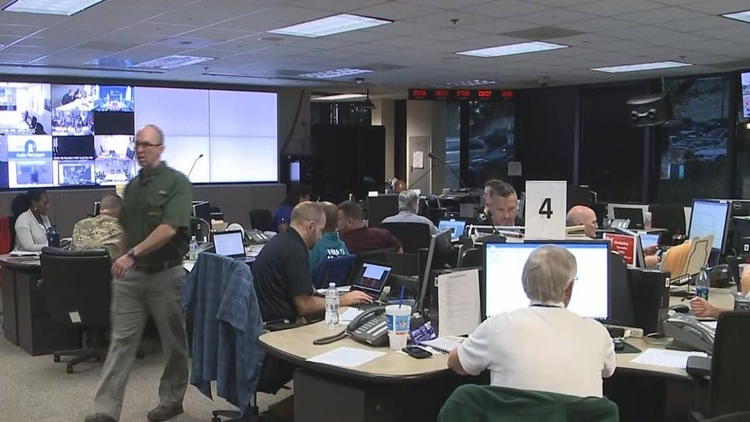ATLANTA -- The Federal Emergency Management Agency's Region IV Regional Response Center is located in Atlanta and is supporting the life-saving efforts in the Carolinas as Tropical Storm Florence moves across the region.
The biggest problem is that Florence has been moving so slowly that much more rain has been dumped on the same geographic area than with other hurricanes in the past.
"That is making things quite difficult to move resources and capabilities around the area of North Carolina and South Carolina, but we are dealing with that and when we have the opportunity to move something forward in response to what the states are asking for we are doing so," said Glen Sachtleben, deputy chief of FEMA's regional response coordination center.
RELATED | LIVE BLOG: Florence updates and video
FEMA has been working since well-before Florence's landfall to prepare for its arrival and to ensure that resources were in place.
"What we had been doing for the past four days before landfall it was to push forward all those critical resources and capabilities and commodities that we expected would need to be employed once the state had asked for it. It has paid off. The search and rescue assets were pushed forward into Fort Bragg and other locations to get them ready to respond once landfall took place and that happened yesterday. It is continuing today. These search and rescue forces are really the only forces that can move safely in this kind of weather and they are doing evacuations, rescues and welfare checks going house-to-house," Sachtleben said.
In an area like eastern North Carolina, it takes quite awhile for floodwaters to recede, especially when compared to other areas.
“In Eastern North Carolina it is usually a long-process because it is pretty flat terrain. It isn’t like draining out the mountains where they would drain out very fast. It is very, very flat so it takes a long time to run-off. So once some of these rivers go above flood stage they could conceivably be above flood stage for weeks in some cases,” said National Weather Service hydrologist-in-charge William Lawrence with the River Forecast Center in Tulsa, Oklahoma. “We expect many of these places to hit moderate to major flooding during the next 48 hours and then it could stay above those for a couple days and above flood stage for many days, weeks in cases.”
Sachtleben says FEMA plans to remain in place for as long as it takes to get the job done, no matter how long it takes for the floodwaters to recede.
"We will stay activated here 24-7 as long as it is required, as long as our forces that are positioned need the back support that we can provide them. Over time we will reach a point where they will have enough people and expertise on-site to take the operation completely on their own," he said.
FEMA Region IV covers the eight southeastern states -- Alabama, Florida, Georgia, Kentucky, Mississippi, North Carolina, South Carolina and Tennessee. Additionally, Region IV covers six federally recognized Native American tribes -- the Catawba Indian Nation and Eastern Band of Cherokee Indians, both of whom are directly affected by Florence, as well as the Miccosukee Tribe of Indians of Florida, the Mississippi Band of Choctaw Indians, the Poarch Band of Creek Indians and the Seminole Tribe of Florida.



